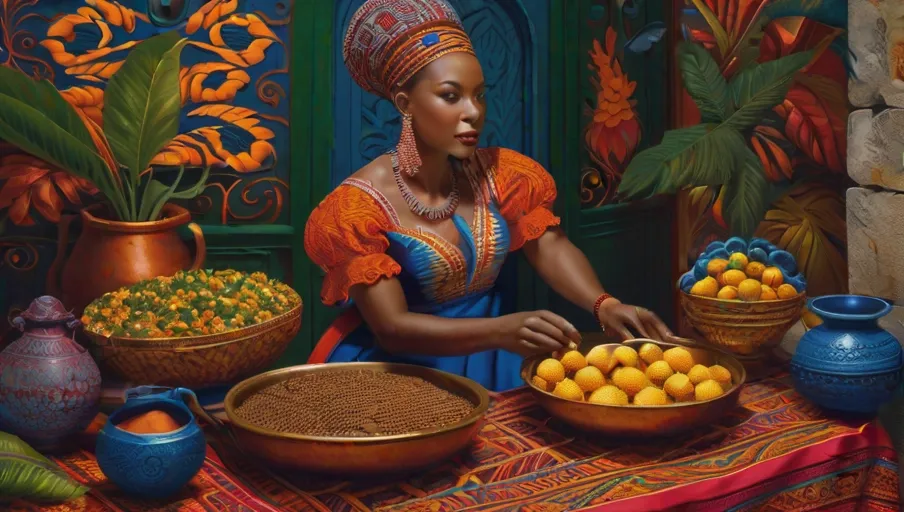Every corner of the world has celebrations exclusive to their culture, and for Haitians, their highlight is none other than the Haitian Carnival.
Also known as ‘Kanaval’ in Haitian Creole, the carnival in Haiti is a vibrant tribute to the nation’s resilience and flamboyant culture.
This article uncovers the roots, the diversity, and the unique expressions that make the Haitian Carnival a spectacular event. So, let’s dive into this magical celebration in Haiti.
Understanding the Concept of Carnival
Defining Carnival
Derived from Latin words, ‘carnival’ loosely translates to farewell to meat, signaling the beginning of the Lent season, which falls after Mardi Gras and before Ash Wednesday.
By a broader definition, a carnival is a social event typically involving a public celebration, a parade, and sometimes performances by carnival troupes.
Carnival: Universality and Diversity of the Concept
The notion of ‘carnival’ is time-old and universally recognized. However, it’s embodied diversely across different cultures. From Brazil’s colossal Samba Parade to the colorful masks in Venice’s Carnival, each event is unique.
Carnival in Haiti, too, although sharing its roots with other Mardi Gras parades, has its individuality steeped in Haiti’s intricate historical and cultural fabric.

The Roots of Haitian Carnival
Origins of the Haiti Carnival
The carnival celebration in Haiti started shortly after their independence in 1804, making it even older than the famed New Orleans Mardi Gras.
It stems from a fusion of African traditions, local customs, and French colonial influences, amalgamating them into an event that beautifully showcases Haiti’s rich cultural heritage.
The Intricate Historical Ties of Carnival and Haiti
The people’s history of Haiti is disclosed eloquently in its carnival festivities. Carrying the baton from the period when people were prohibited from reveling in their African culture, the Haitian Carnival emerged as a triumphant mark of their freedom.
The narrative of liberation and cultural identity adaptation strongly resonates through the centuries of Haitian history that the carnival epitomizes.
The Significance of Haitian Carnival in Six Chapters
Carnival: A Reflection of Centuries of Haitian History
If anyone ever wanted a crash course on Haiti’s past, attending the Haitian Carnival would just be fine. The event represents history in six vivid chapters, from the tumultuous colonial times to the Duvalier era and the subsequent democratic transition.
Behind the mirth and music of Haiti’s carnival lies an undaunted spirit reflecting centuries of Haitian history.
Carnival’s Role in Unveiling Haiti’s Evolution
As the main carnival is held each year in Port-au-Prince, the capital of Haiti, the vibrant displays of colorful floats and costumes weave a narrative of Haiti’s progress.
Wealthy Haitian families who once looked down upon the festivities are now patrons of the carnival troupes, marking significant societal changes.
Unique Elements of Haitian Carnival
Rara: A Unique Haitian Carnival Expression
The Rara bands, with their pulsating Haitian music, are an integral part of the carnival season in Haiti. With their traditional instruments, they bring the streets alive, telling stories of politics, religion, and everyday life.
Krewe Culture in Haitian Carnival
Taking a leaf from New Orleans, Haiti’s carnival also includes the Krewe culture. These krewes, comprised mainly of friends and families, work year-round to prepare for the grand parade, making the event more participatory and democratic.

Exploring Creole Carnival Expressions
The Influence of Creole Culture on Haitian Carnival
The Haitian Carnival is a testament to Creole culture and Haiti’s fusion identities. The traditional Haitian expressions, Vodou ceremonies, ‘Mizik Rasin’ (root music), and intricate ‘papier-mâché’ masks signify the Creole influence in the carnival of Haiti.
The Role of Creole Languages in Haitian Carnival
As the country’s lingua franca, Haitian Creole plays a significant role in the carnival. The songs played by bands are in Creole, helping locals connect better with the celebration and the messages it carries.
Popular Carnival Events in Haiti
Highlight: Carnaval des Fleurs
One of the best carnival events in Haiti, Carnaval des Fleurs (Carnival of Flowers), celebrates Haiti’s flora and fauna. Thousands of spectators from across the world flock to the city of Port-au-Prince to admire the awe-inspiring spectacle.
Koudyay: A Carnival Tradition in Haiti
Nobody wants the carnival season in Haiti to end. To extend the festive mood even after Ash Wednesday, they celebrate Koudyay, a smaller carnival much loved as a traditional Haitian extension of the festivities.
Travelers Guide to Haitian Carnival
When and Where to Experience Haitian Kanaval
The Haitian Carnival, the largest annual event in Haiti, is held in the Champ de Mars area of Port-au-Prince. However, regional Kanavals, like the one in Jacmel, are equally vibrant and less crowded.

February is the most optimal time to visit for the Kanaval experience.
Tips on Enjoying the Carnival in Haiti
Be ready to immerse yourself in the local culture and music, and don’t miss out on the traditional foods! Staying safe during the massive gatherings is also essential.
Exploring more of Haiti: Other Places to Visit
Even outside the Carnival season, Haiti has a lot to offer. From the entrenched history of the Citadelle Laferriere to the tranquil beaches of Les Cayes, there’s much to explore.
References and Additional Resources
Further Reading on the History of Haiti and Its Carnival
‘Haiti: The Aftershocks of History’ and ‘The Black Jacobins‘ are fantastic resources to delve deeper into the history of Haiti and its incredible Carnival.
External Links to Haitian Carnival Resources
For additional information on the most recent Haitian Carnival events, it’s best to check official government tourism websites and trusted travel blogs catering to the Caribbean region.



